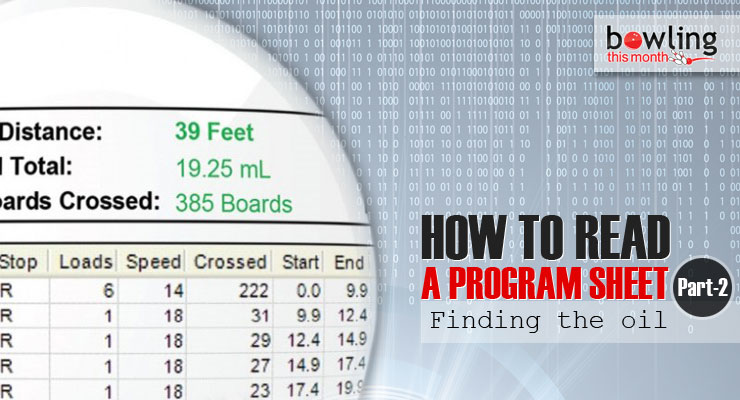Article Contents
- 1. 2 to 2 loads
- 2. Pattern length
- 3. Total volume
- 4. Reverse brush drop distance
- 5. The overhead graph
- 6. Composite bar graph
- 7. Oil ratio
- 8. USBC requirements
Note: This article is only available to Bowling This Month subscribers.
I promised that this month we would talk about how to translate all this data into a place to play on the lane, so here goes. What part of this do you really need to know and how will it help you? Here again is the 2012 Baton Rouge program sheet we’re using. (see below)
I think you should pay attention to the number of 2 to 2 loads, the pattern length, the total volume of oil, the ratios, and, if the program sheet has this information (which the sample does not), the reverse brush drop distance. More on that in a moment.
2 to 2 loads
The more 2 to 2 loads, the more difficult the pattern can be. It gives you a clue about how much oil will be near the ditch. Obviously, the more oil near the ditch, the less free hook to the outside you will have.
If I just used one load from 2 to 2 and the distance was 44 feet, then I would be dragging not much oil 44 feet and by the time I get close to the end of the pattern, it will be pretty dry on the outside. If I have six loads, however, that won’t be the case. You will have less (maybe no) room to swing the ball and could “enjoy” an out-of-bounds experience with a lateral area check.
Pattern length
The longer the pattern, the closer to the headpin you have to play. On a 44 foot pattern, there is only 16 feet of dry back end. That’s not much time or distance for your orb to slow down and move toward the pocket. When that distance is so short, the ball needs to be closer to the headpin when it makes its move. In case you are wondering what constitutes a short, medium, or long pattern, less than 36 feet is considered short, 37-42 feet is considered medium, ...
Already a premium member? Click here to log in.


